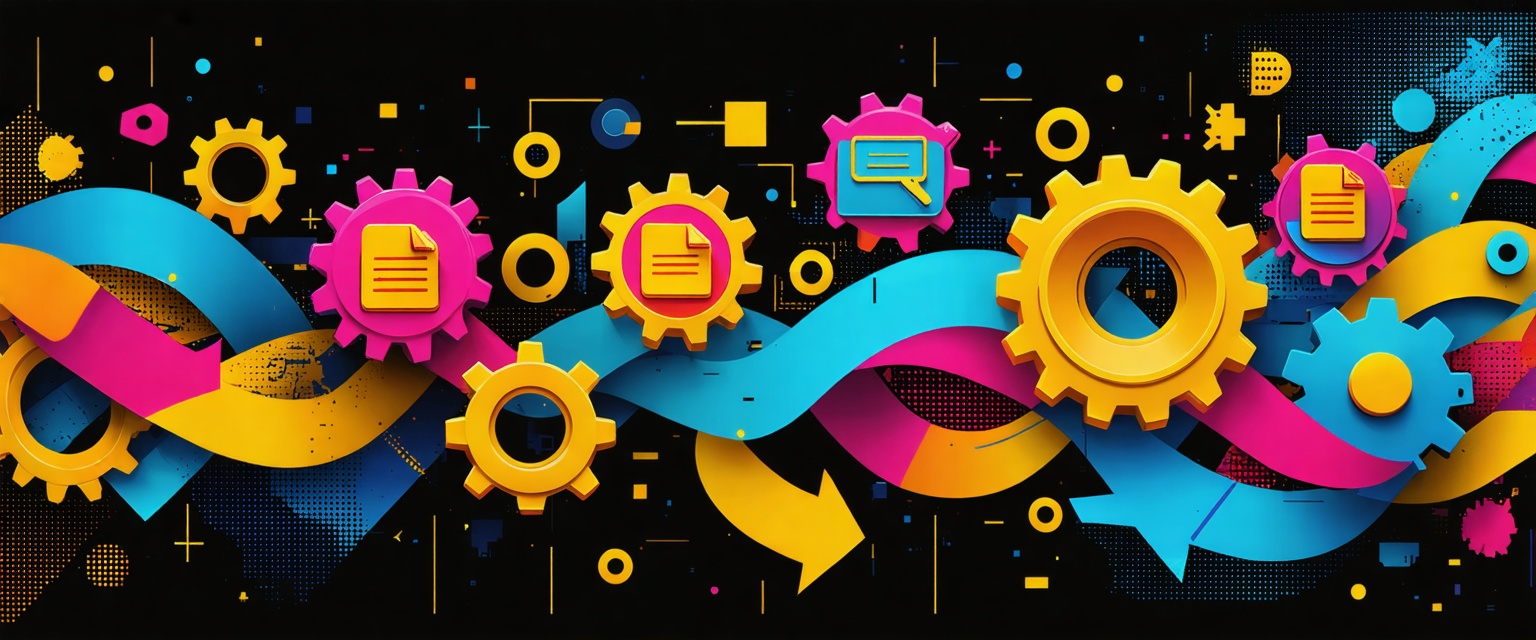Streamline sales with automation! Discover how Datagrid helps teams automate contract creation, boosting compliance, reducing errors, and saving time.
Is your sales team bogged down by contract audits and negotiations? Do manual processes lead to errors, inefficiencies, and missed opportunities? If you're wondering how to automate contracts creation in sales to streamline operations and close deals faster, you're not alone.
Leveraging Datagrid's data connectors and AI agents for contract automation is a practical solution. By automating everything from drafting error-free agreements to staying on top of tasks, Datagrid redefines how you handle contracts in the sales process. Let's explore how these tools can reshape your approach, giving your team the freedom to focus on driving revenue.
Benefits of Automation
Automating contracts creation in sales reduces errors and enhances compliance. By automating sales proposals and other processes, teams can standardize contract templates to align with up-to-date legal requirements and company policies. This minimizes the risk of using outdated or incorrect language that could lead to fines or disputes. Automated systems use pre-approved clauses that meet regulatory standards, reducing human error.
Saving time is a huge win. Automation simplifies creation, review, and approval, so organizations can quickly produce contracts from standard templates. It can cut repetitive tasks significantly. Automated notifications reduce manual approvals and follow-ups, keeping everyone informed and moving quickly.
Automation also boosts compliance by tracking obligations and deadlines with automated alerts. This proactive approach helps you avoid missing important requirements.
Automating Contract Creation in Sales
Here are steps to help you bring contract automation into your organization:
- Identify the Need for Automation
Evaluate your current processes to spot inefficiencies. Are errors cropping up too often? Do approval times stretch too long? Pinpointing these issues helps you set measurable objectives. - Select Appropriate Contract Management Software
The right software is crucial. Look for centralized contract storage, automated workflow management, electronic signature integration, and robust analytics. - Customize Templates and Workflows
Make the software work for you by customizing templates and workflows to match your business. Implementing AI-driven proposal automation can help in creating customized proposals more efficiently. Tailoring these elements eases the transition and ensures alignment with your operational and compliance needs. - Train Users on New Automated Processes
Training is vital. Teach your team how to navigate the new features and support them through any challenges. Their comfort with the technology—and how it affects their daily tasks—will determine how well it's adopted. - Ensure Seamless Integration with Existing Systems
Choose software that plays nicely with your existing CRM and ERP systems. Smooth data flow and aligned processes preserve the benefits of automation and prevent disconnects across teams. - Monitor and Evaluate the Effectiveness of Automation
Keep an eye on key metrics like turnaround times and user satisfaction. Use real data to make adjustments and continually improve your contract management outcomes.
Tools and Technologies for Automating Contracts
Contract automation tools and technologies streamline the entire lifecycle, from drafting to renewal. They cut manual work, keep track of obligations, and help businesses stay clear of legal pitfalls. AI scheduling tools, and solutions such as leveraging Calendly, can also enhance efficiency by automating meeting coordination and deadlines.
Types of Contract Automation Tools
- AI-Powered Contract Analytics
Uses artificial intelligence and machine learning to analyze terms, suggest edits, and perform contract comparison automation, slashing manual review time and boosting accuracy. - Contract Management Software Integration
Syncs with CRM and ERP systems, ensuring consistent data across platforms. Everyone stays up to date on contract statuses, which helps maintain smooth operational workflows.
Integration with Sales Systems
When tools integrate with sales platforms, collaboration between sales and legal teams gets easier. Connecting contract data with CRMs like Salesforce allows sales professionals to create and manage contracts without switching systems.
For example, connecting Salesforce and DocuSign streamlines the contract signing process. Similarly, HubSpot-Calendar integration helps in organizing meetings and deadlines directly within the CRM, enhancing team coordination. Additionally, connecting Salesforce and PandaDoc can simplify document creation and management within your CRM. This cuts down on data entry errors and improves visibility into the sales cycle.
Role of Multi-Modal AI Models
Some AI models can handle various data types—text, images, structured data—all in one workflow. This lets you tackle complex tasks like spotting critical terms or predicting risk factors, resulting in a smoother process with less need for manual checks.
Challenges and Solutions
Automation brings efficiency and consistency, but hurdles can crop up when rolling it out. Common issues include reluctance to embrace new technology, system integration snags, and concerns over data security. Here’s how to tackle them:
Resistance to Change
People might fear losing their jobs or be intimidated by new tools. Clear communication about how automation supports—not replaces—their roles can ease concerns. Continuous training and involving stakeholders keep teams engaged and open to change.
Integration Issues
Old systems can make adding automation tools tricky. Assess your current workflows thoroughly to spot conflicts. AI solutions that adapt to older setups can ease integration.
Data Security Concerns
Automation means more data is collected and stored. Keep it safe with strong encryption, regular security checks, and reliable cloud-based solutions. This helps prevent unauthorized access and keeps versions under control.
Measuring Success in Automating Contract Creation
Monitoring performance reveals how well automation serves your goals and flags areas for improvement. Common metrics include contract cycle time, workflow processing speed, updates to risk-related language, and how well reporting aligns with specific needs.
Reduction in Contract Cycle Time
One key sign of success is how fast a contract goes from drafting to execution. Automating contracts creation in sales removes manual bottlenecks, helping agreements move forward faster. Hold-ups drop substantially when collaborators can share feedback digitally and access resources on demand.
Workflow Processing Time
Automation reduces the time spent on reviews and negotiations. Standard templates and real-time tracking massively boost efficiency. With fewer manual errors, teams face fewer delays when seeking final sign-off.
Material Changes in Risk-Related Language
Risk management becomes easier when automation spots deviations from standard contract terms. Systems can score or flag these changes, allowing legal teams to act before issues arise.
Customizable Reporting
Reporting tools track metrics like turnaround time, error rates, and risk management. Dashboards customized for your organization highlight where things are working and where improvements can be made.
How Agentic AI Simplifies Sales Document Handling
Datagrid's data connectors and AI agents offer sales teams a powerful way to boost productivity and streamline data management. By using advanced AI technology and connecting with over 100 data platforms, Datagrid lets you focus on high-value activities while automating repetitive tasks.
Datagrid’s platform includes flexible data connectors that move information across diverse systems. They work smoothly with CRMs like Salesforce, HubSpot, and Microsoft Dynamics 365, so lead details and customer updates stay accurate and easy to access. These connectors also sync with marketing tools such as Marketo and Mailchimp for effortless sharing of email metrics and lead scoring data.
AI Agents: Enhancing Sales Productivity
- Lead Generation and Qualification
Agents scan social networks like LinkedIn and Twitter, automating lead enrichment by gathering data on promising leads flagged by predefined criteria for quick follow-up. - Personalization at Scale
Agents piece together data from multiple sources to shape detailed prospect profiles. Tied to analytics platforms like Tableau and Power BI, these insights guide personalized outreach that addresses industry- and company-specific pain points. - Task Automation
Mundane chores including calendar invites and follow-up emails become automated routines. Integration with Slack, Microsoft Teams, Asana, and Trello reduces context-switching and keeps workflows on track. - Data Analysis and Insights Generation
Agents sift through thousands of documents in moments, blending financial data from QuickBooks and NetSuite with sales forecasts to deliver a panoramic view of performance. They can also assist with AI agents for report writing, generating comprehensive reports efficiently. - Multi-channel Engagement Optimization
By analyzing communication habits, the platform personalizes outreach timing, culminating in consistent messaging powered by a centralized content hub.
With Datagrid's data connectors and AI agents, sales teams can swap busywork for building relationships and closing deals. Accurate, up-to-date information from integrated systems leads to better decisions and more focused engagement. This approach fuels efficient sales cycles, stronger results, and a competitive edge in a crowded marketplace.
Simplify Contract Management with Agentic AI
Don't let data complexity slow down your team. Datagrid's AI-powered platform is designed specifically for sales professionals who want to:
- Automate tedious data tasks
- Reduce manual processing time
- Gain actionable insights instantly
- Improve team productivity
See how Datagrid can help you increase process efficiency.
Create a free Datagrid account













